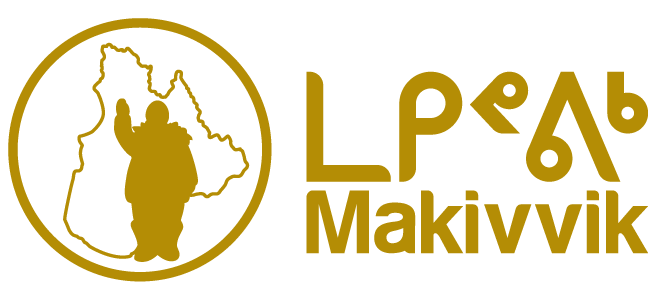The Makivvik-run operation hopes to expand in the future
Daniel Gordon takes his gloves off to speak on the phone. He has just put some wolf, fox, and otter skins into a tanning bath at the Nunavik Furs facility in Kuujjuaq. He is discussing a workshop he was able to attend in the summer organized by ÉcoFaune Boréale, which is the tannery innovation center and research department of the CEGEP de Saint-Félicien, located in Mashteuiatsh, Que. Nunavik Furs is run solely by Makivvik, and a research partnership agreement was signed in 2019 with the CEGEP that is to last until 2023-2024 fiscal year.
“They gave us a new formula for tanning the last time we were with them,” he says. “We’re always getting better. With the new equipment they provided to us that we installed, and officially hooked up last spring, everything is running a lot smoother and more efficiently with less labour than the way we were doing it, more old-school style.”
And the relationship goes both ways. Twice a year, students and researchers come up from the CEGEP to use the facility for research and development, applying techniques in a real-world situation. This year, two tanners from Kuujjuaq visited the ÉcoFaune Boréale lab and were able to test equipment they were thinking of purchasing that focuses on sealskin and handling furless leather, two markets the tannery would like to explore. One of the main pieces of equipment was a fleshing machine, bought by the CEGEP and installed at the tannery, which is almost like an inverted lawnmower. The sealskin is put in and wringers shave it off, depending on how much you want, and shaves off the fat and flesh from the other side.
“They are very precise, to the millimeter,” Daniel explains. “You can adjust it. The ones we had were sort of a guess of what depth you were going to go to on the fleshing and you constantly have to readjust. This one is very precise and they’re stainless steel so even more easy to clean.”

The tanners in Kuujjuaq are learning at the same time because people from the CEGEP are constantly learning and upgrading the way that they process the fur and sharing it with the tannery employees.
One of the research projects currently being worked on is a grey water system. Tanning animal hides takes up a lot of volume in water and produces a lot of volume in sewage. In a community like Kuujjuaq, there’s only so many times the water and sewage trucks can come to the tannery, and it can get expensive with additional municipal taxes and fees are associated with water and sewage services. The CEPEG researchers are trying to develop a grey water system so that some of the discarded water can be reused within the tanning process. The tannery has installed a separate grey water and sewage tank, so it now has two tanks, one for the raw sewage from the washroom and the kitchen, and a separate tank just for the tanning process itself.

The Kuujjuaq tannery was created with the mandate to provide services to the hunters and seamstresses of Nunavik. First and foremost, it targets these clients to provide tanning services for their personal raw furs. Makivvik’s Economic Development Department does have plans to expand and are looking at increasing their own purchases of raw furs from hunter support programs that are not being worked or traditionally processed, whether it be caribou, seal, or fox, to resell over the counter. For now, much of its business is for someone who caught their first polar bear, for example, or sometimes they do the service, and the client will resell on their own. Of course, any polar bear skin must come with a harvesting report and a tag, and Daniel says that tag should be installed on the neck, not the nose, where it is more prone to break off while being cleaned in the drum.
This isn’t an issue with Daniel’s favourite skin to tan: otter. “Its skin is thick, it’s easy to flesh and the end result is very nice all the time.”
For 2024-2025 and beyond, Makivvik is exploring the possibility of extending or renewing its partnership with the CEGEP, and with upgraded equipment and operations, focus on other recommendations suggested by the ÉcoFaune Boréale.




